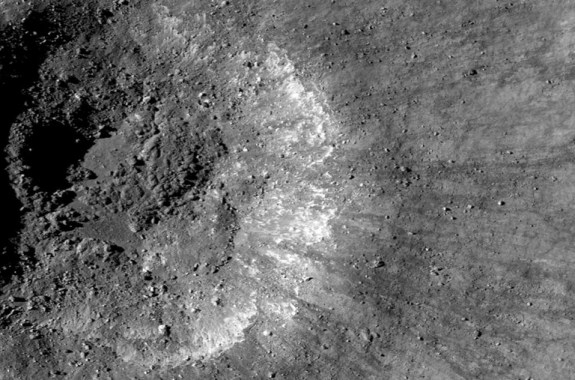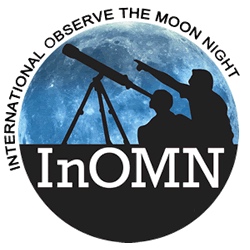Grade Level
3 - 5
minutes
15 min - 1 hr
subject
Earth Science
Activity Type:
outdoor activity, lunar science, modeling
The Young Moon Was Hit by Large Asteroids
Scientists study the moon’s rocks and surface features to learn how it formed and changed over its long “lifetime.” Impact craters and basins form on the surface of the moon when an impactor, such as an asteroid or comet, collides with it. The moon’s largest impact basins—those we can see with our eyes, without the aid of instruments—were formed by very large asteroids or comets striking the surface early in the moon’s history.
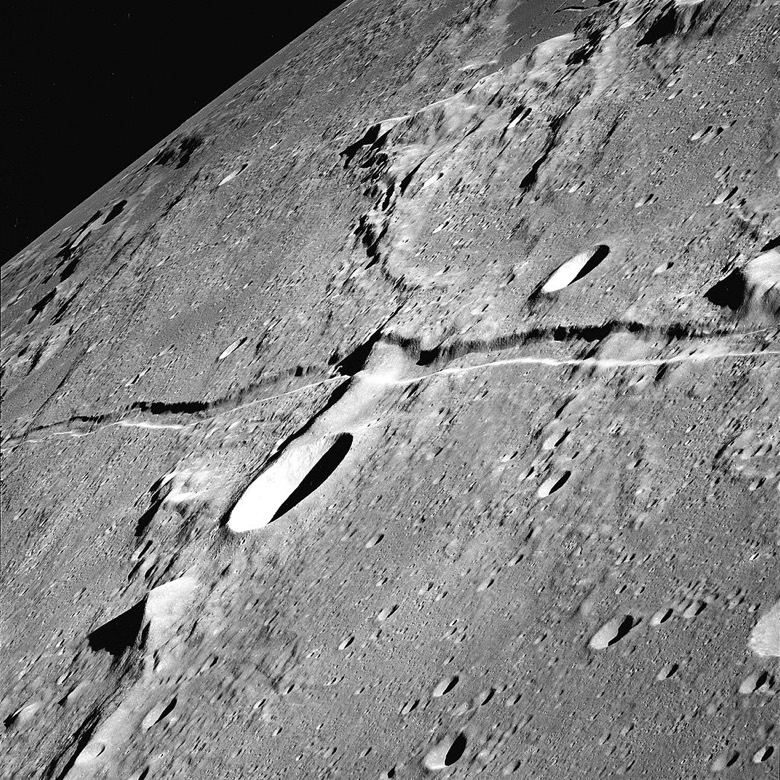
The moon endured a violent period in solar system formation when large impacts were much more common than they are today. Based on the ages of lunar samples collected during the Apollo missions, scientists theorize that this period ended 3.8 billion years ago. Lunar researchers are trying to determine how long this period of intense bombardment occurred, and what caused it. The size of an impact crater or basin depends on the speed and size of the asteroid or comet before the collision and the material it impacts. Most impact craters will be 10 to 20 times the size of the impacting asteroid or comet.
By measuring the diameter of the crater area, you will discover that the moon’s largest impact basins were created by huge asteroids or comets! Like these giant impactors, the water balloons are destroyed on impact and leave a splash (i.e. a “crater”) that is 10 to 20 times wider than the impactor. The largest basins formed on the young moon, when it was 400 million to 800 million years old. You will find the impact basins—the moon’s largest features—on a map and consider how they have changed since they first formed to become the dark patches (“maria”) on the moon’s face. You also might want to examine a type of Earth rock (named breccia) that is found on the moon and would have been shaped by the processes we explore in this activity.
Splat! Activity
Models—like the one used in this activity—can be tools for understanding the natural world. In this activity, you will model ancient lunar impacts using water balloons to represent asteroids or comets.
Materials
- —Access to water
- —5 water balloon
- —1 ruler or tape measurer
- —Art materials, such as colored pencils, crayons, and markers
- —Illustrations and images of basin-forming impacts, basins, and asteroids, printed in color or displayed on a computer (and projector, if desired)
- —Moon Map: Lunar Impact Basins
- —Splat! Worksheet
- —Splat! Student Guide
Optional Materials: a clipboard, towel, bucket, and sample of Earth breccia, ordered from a natural science catalog (example).
Preparation
This is a fun but messy activity! Wear an old shirt or clothes that you don’t mind getting wet. It is a good idea to have a towel handy for cleaning spills.
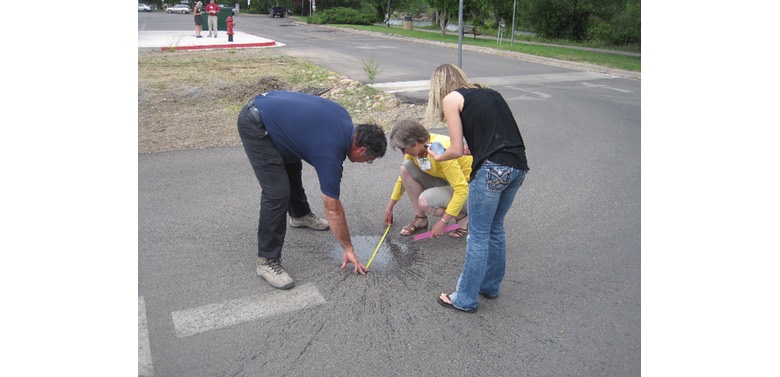
- Prepare enough water balloons. You should have at least three, so you can calculate an average. Note: Water balloons should be pretty full to break on impact, so handle delicately.
- Go to a safe outdoor space with concrete, like a patio, driveway, or parking lot for dropping your balloon.
- Be sure to have your data collection materials—pen/pencil, Splat! Worksheet (on a clipboard if you have one), and a ruler or measuring tape.
- Place the Earth rock sample, art materials, printed moon map, and student guide on a nearby table or surface.
Splat! Procedure
You’re going to model the lunar impact process using water balloons. Impacts will be modeled by breaking water balloons onto an outdoor concrete patio or sidewalk and measuring the resulting splash.
- Before beginning, measure the shorter diameter of the water balloon and record it on your Splat! Worksheet. This is the size of your impactor.
- Drop or throw your water balloon on a flat, solid, dry area.
- Measure the width of the continuous wet area (splash) and record it on your Splat! Worksheet. This is your crater.
- Calculate the ratio of crater size to impactor size and record it. Hint: [crater width ÷ impactor width]
- Repeat for all 3 balloons.
- Calculate the average of your ratios and record it.
- Be sure to pick up all of your leftover balloon pieces!
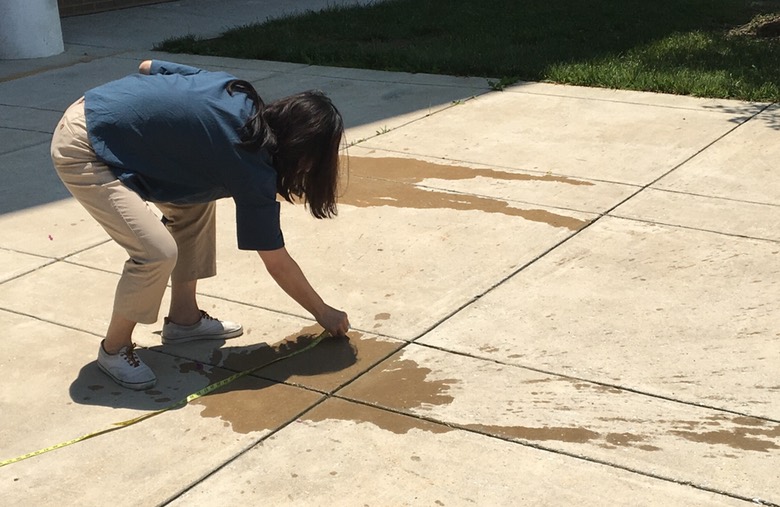
Conclusions and Extensions
You might have noticed that your water balloon splashes—impact craters—were roundish. Similarly, the large circular features you observe on the moon are impact basins! They were formed by large impactors (asteroids or comets) striking the moon’s surface. Craters and basins on the moon are larger than the asteroids and comets that created them—10 to 20 times larger!
Impactors are like water balloons because they are destroyed upon impact, and very little of the asteroid or comet remains. (Remnants of asteroids found on a planetary surface are called meteorites.) Asteroids are much more rocky and moving faster than the balloons in this model; they are far more damaging.
Scientists experiment with physical models—like you did—to determine the size of an impactor. Their models uses projectiles that can move at high speeds and impact different types of materials. Videos of these impacts help scientists model how the materials behave. Scientists also use computer models to understand what happens during an impact. They also study impact craters on Earth, like Barringer Crater (Meteor Crater) in Arizona to understand impact processes. The meteorites and altered rocks and minerals in these craters contain clues as to the type, size, and speed of the impactor.
Correlations to Next Generation Science Standards
4-PS3-3. Ask questions and predict outcomes about the changes in energy that occur when objects collide.
Disciplinary Core Ideas
- ESS1.C: The History of Planet Earth
Some events happen very quickly; others occur very slowly, over a time period much longer than one can observe. - PS3.A: Definitions of Energy
Motion energy is properly called kinetic energy; it is proportional to the mass of the moving object and grows with the square of its speed. (MS-PS3-1)
Nature of Science:
- Scientific Investigations Use a Variety of Methods
Science investigations use a variety of methods and tools to make measurements and observations. Science and
Engineering Practices:
- Developing and Using Models
Develop and/or use models to describe and/or predict phenomena. Evaluate limitations of a model for a proposed object or tool.
The original version of this activity comes from “Explore! Marvel Moon,” a group of activities intended for libraries and other informal education environments. It can be found on the Lunar and Planetary Institute website.
Images by Andrea Jones unless otherwise indicated.
About International Observe the Moon Night
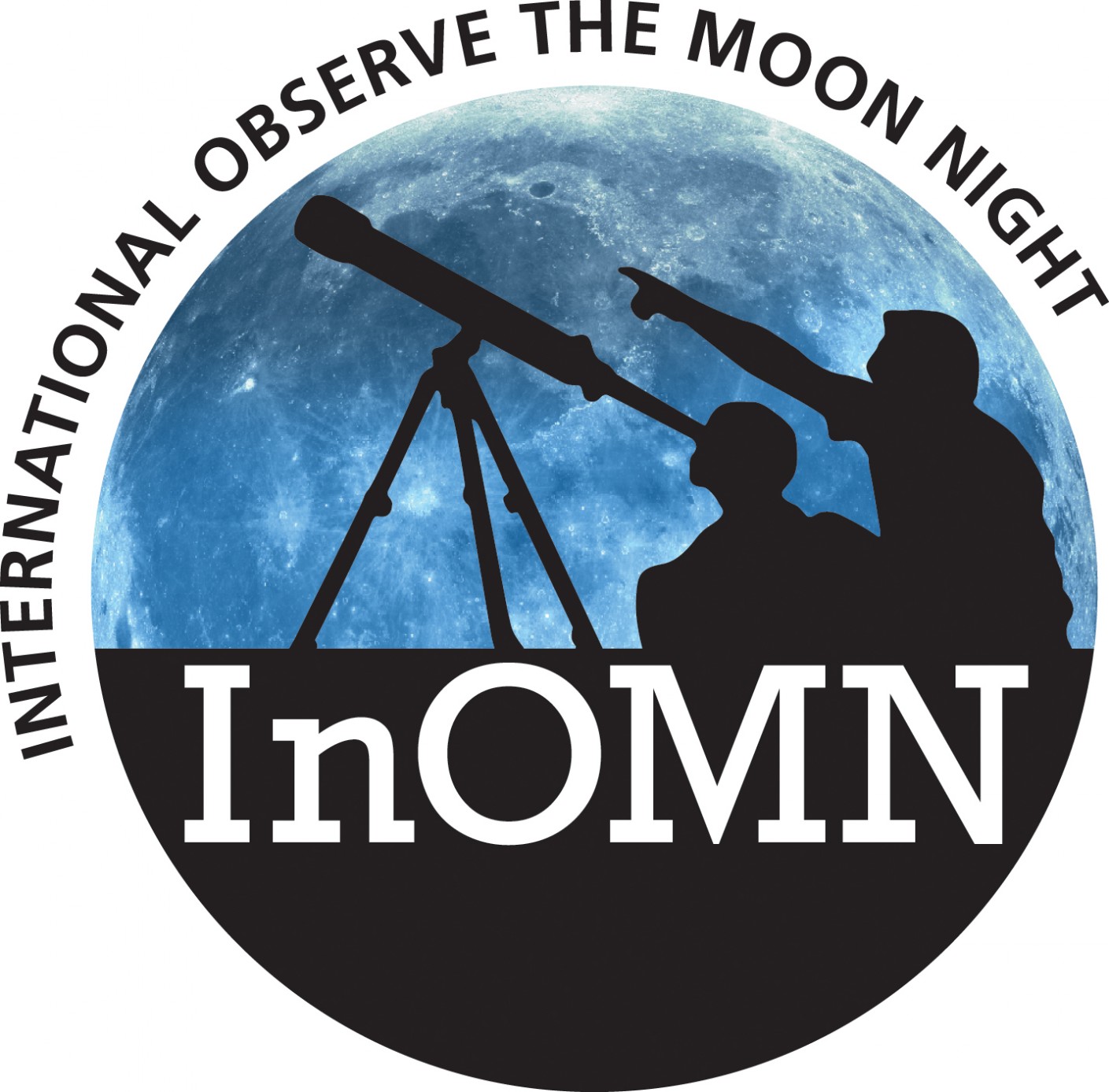 One day each year, everyone on earth is invited to unite in order to observe and learn about the moon and its connection to planetary science. This special day, called International Observe the Moon Night (InOMN), is a NASA-sponsored, annual worldwide celebration of lunar science and exploration, and it’s a great opportunity to share personal and community connections we all have to the moon. Join the celebration by hosting or attending an InOMN event—and by looking at and learning about the moon! You can learn more and find lunar viewing events near you at www.observethemoonnight.org.
One day each year, everyone on earth is invited to unite in order to observe and learn about the moon and its connection to planetary science. This special day, called International Observe the Moon Night (InOMN), is a NASA-sponsored, annual worldwide celebration of lunar science and exploration, and it’s a great opportunity to share personal and community connections we all have to the moon. Join the celebration by hosting or attending an InOMN event—and by looking at and learning about the moon! You can learn more and find lunar viewing events near you at www.observethemoonnight.org.
Educator's Toolbox
Meet the Writer
About International Observe the Moon Night
The International Observe the Moon Night Team is made up of scientists, educators, and lunar enthusiasts from government, nonprofit, and business organizations from across the United States and the world.
